Results 1 to 10 of 14
Thread: Iwasaki tamahagane kamisori
Hybrid View
-
09-18-2016, 01:08 PM #1
 Iwasaki tamahagane kamisori
Iwasaki tamahagane kamisori
Received this Iwasaki kamisori a while ago.
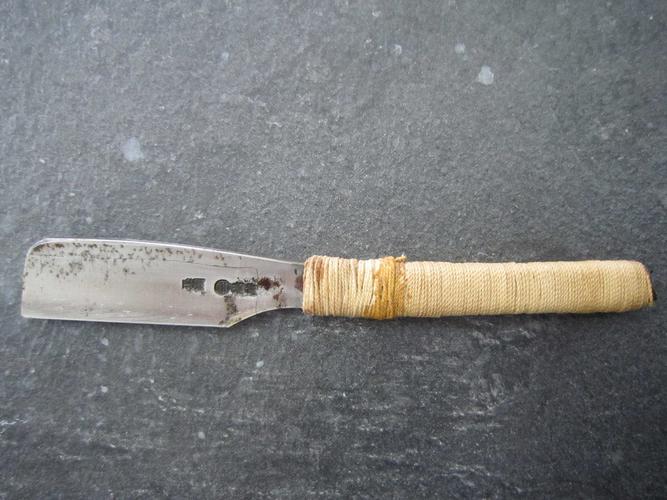
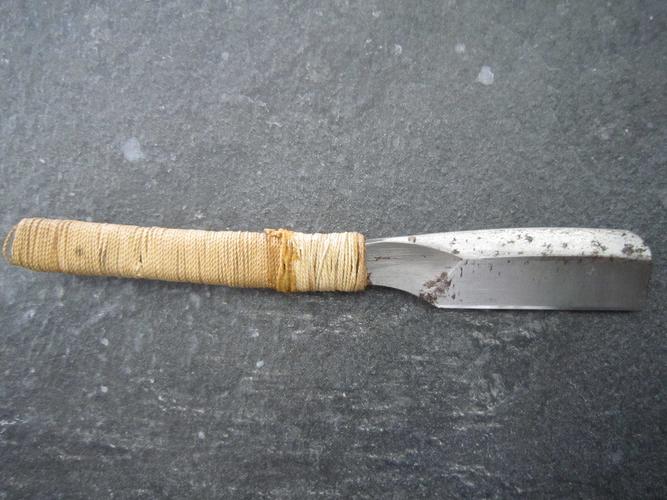
Some stain, nothing really serious, but the pitting goes deep.
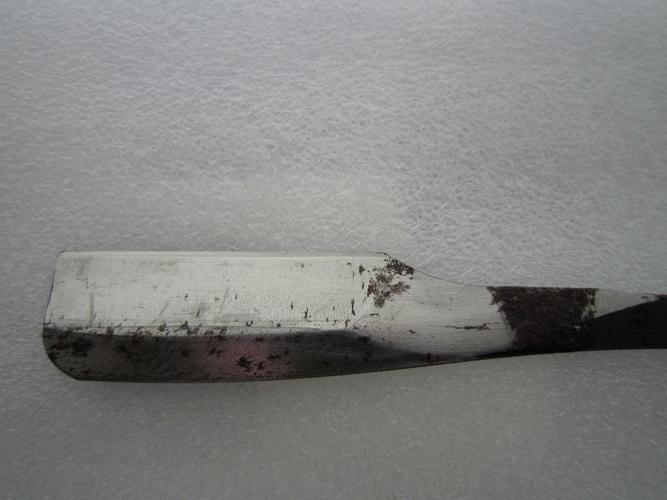
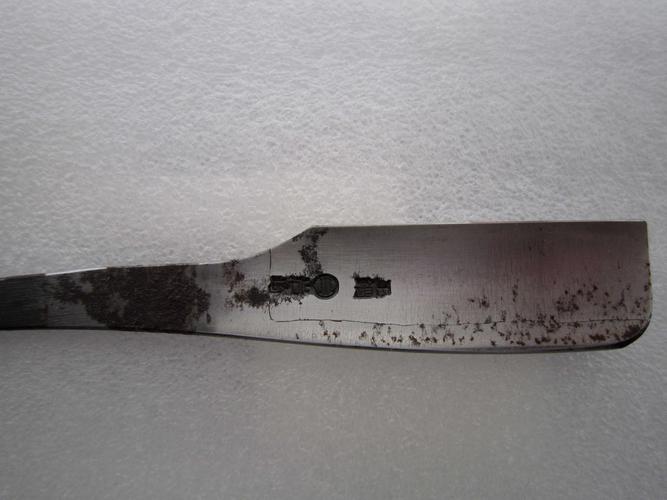
So the questionn in restoring is always how far should you go. Basically on a blade like this a total regrind to remove all stain pittings totally is possible without a problem. But what about the nature of the blade? It will become different and does maybe not coincide with the thoughts, the craftmannship and the soul the original maker has put in. So mostly I hesitate from a totally regrind. I don't want to make a new blade or a blade that looks like new even though it is an old one made by a very famous and honorous master.
So also here I decide to do only a minimum necessary to remove the rust totally but not the pitting in complete depth. Therfore I didn't use any grinding wheels - only different polishing wheels with different hardness and glued with different grades of Naxos emery.
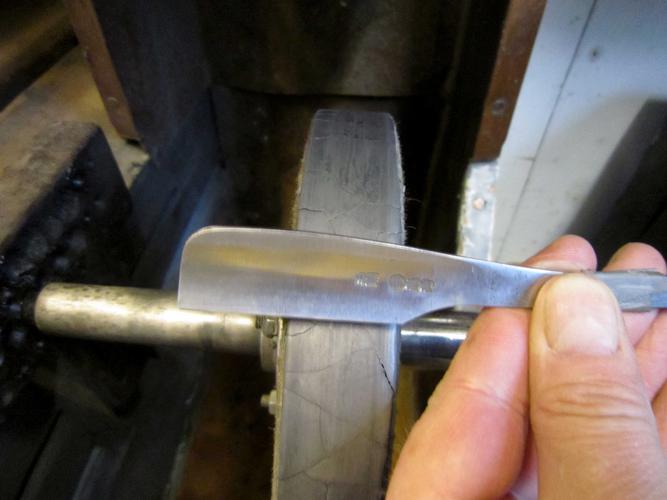
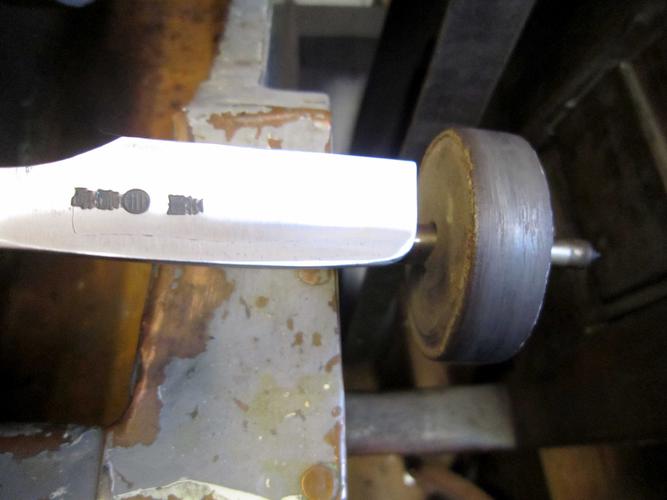
-
09-18-2016, 01:13 PM #2

The original finish was satin and I aso put the omote to a satin blue polishing. However the ura and the back of the blade didn't really please me with that finishing so I did a bit more polishing, what we call a clear polishing. So it is not total mirror polishing, but something in between the blue and mirror polishing.
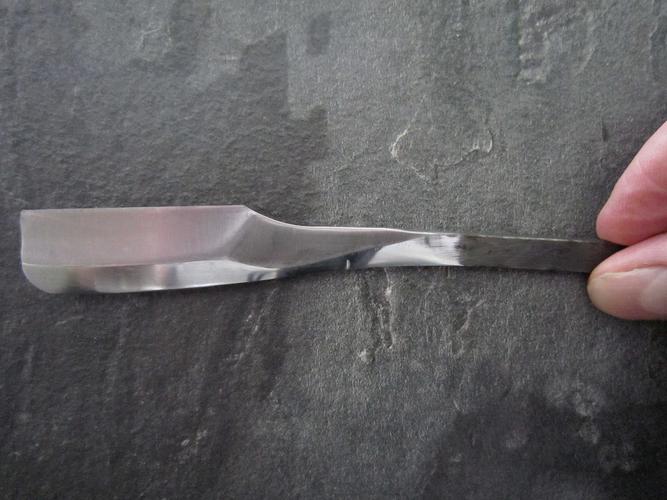
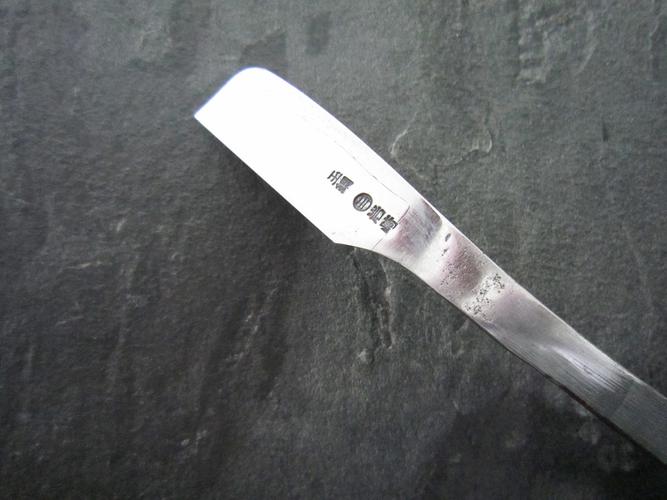
My first thought was not to do any wrapping on the blade any more. But to remove the rust I had to polish away parts of the black forging skin on the tang. So basically I could have done some black oxidizing on the tang to bring back the black color again. But it is very difficult to create the same shade of black color to fit to the remaining original one. And I did not want to remove what was remaining.
So I decided to do a wrapping agan. Since I did not want a very tight wrapping, more a bit loose-fitting to enable the entering water to penetrate to the surface and evaporate and since I also need some more grip for my large fingers I decide to use a more thicker cord than usally.
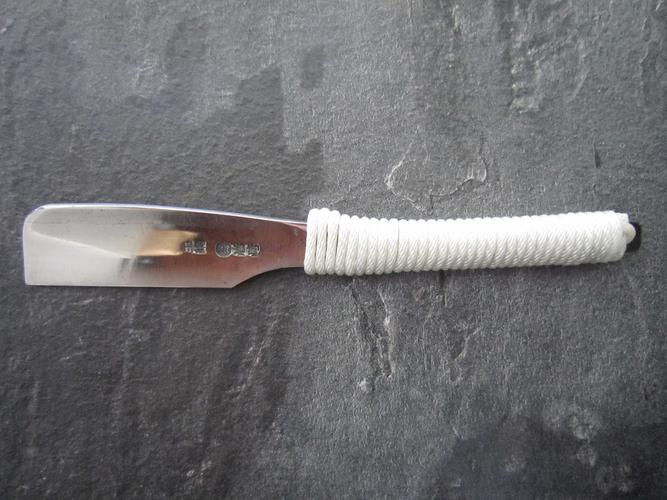
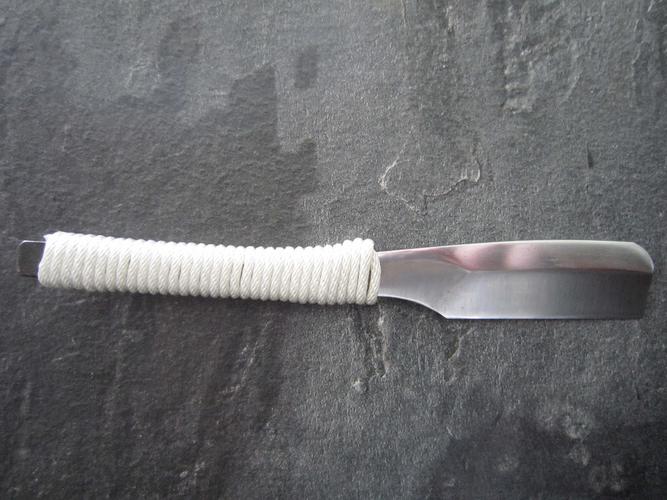
So this is the final result:
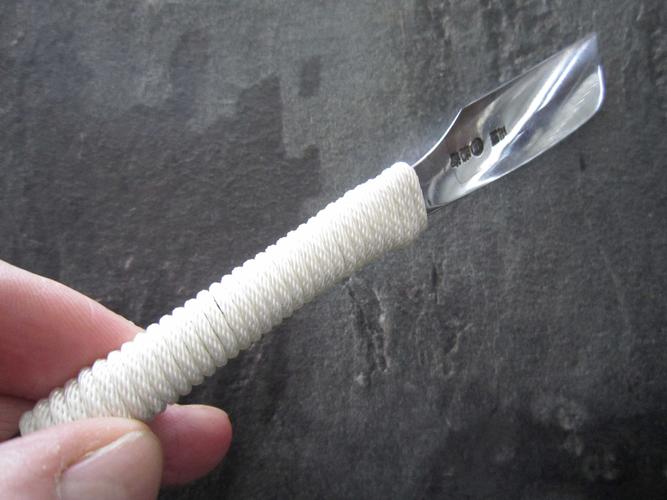
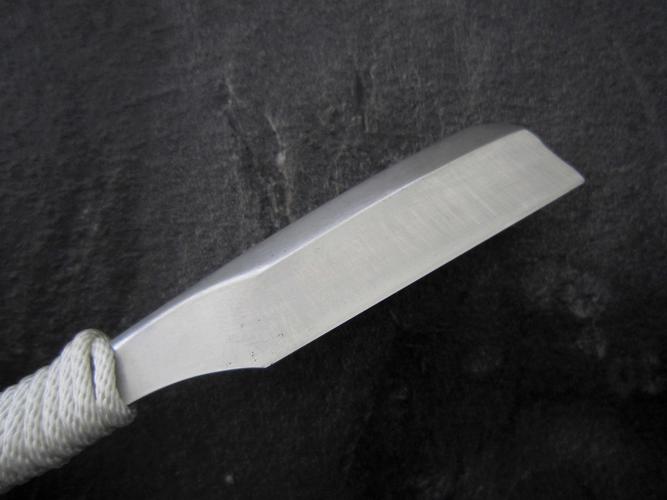
-
-
09-18-2016, 02:51 PM #3I used Nakayamas for my house



- Join Date
- Aug 2009
- Location
- Des Moines
- Posts
- 8,664
- Blog Entries
- 1
Thanked: 2591
great job on the restore
Stefan
-
09-18-2016, 03:57 PM #4

A tremendous restore. Well done!
Tony
-
09-18-2016, 04:05 PM #5

amazing! no need to do a regrind, i would be very happy with the results.
-
09-18-2016, 05:47 PM #6

Thank you for sharing your work. You showed your Iwasaki the respect it deserved.
Bob
"God is a Havana smoker. I have seen his gray clouds" Gainsburg


 43Likes
43Likes LinkBack URL
LinkBack URL About LinkBacks
About LinkBacks






 Reply With Quote
Reply With Quote



